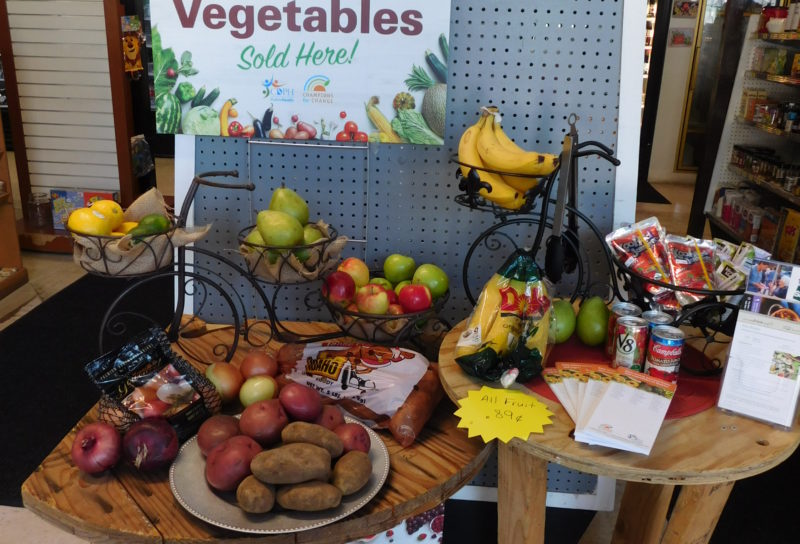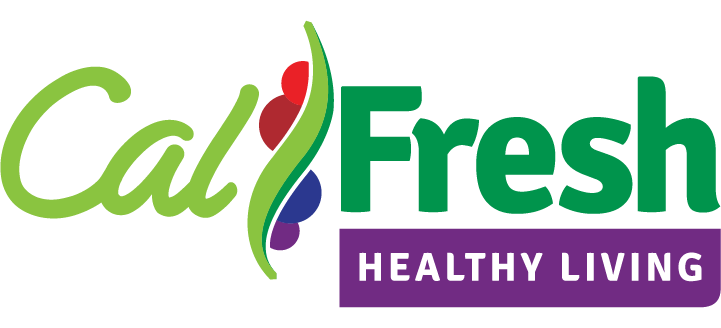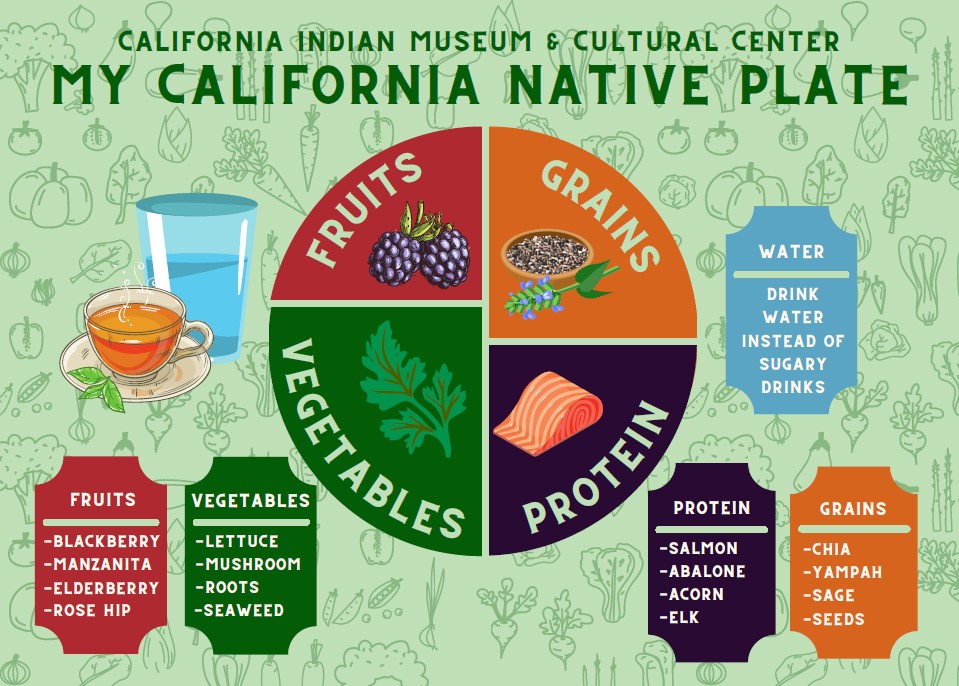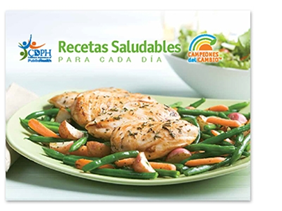
Healthy eating patterns support a healthy body weight and can help prevent and reduce the risk of chronic disease throughout periods of growth, development, and aging as well as during pregnancy.
MyPlate
MyPlate is a fun and easy nutrition guide to help incorporate the five food groups into your daily lifestyle. The five food groups represented on MyPlate are Fruits, Vegetables, Grains, Protein and Dairy. MyPlate is used to assist in building a healthier eating style by including foods from all five food groups.
MyPlate offers ideas and tips to help you create a healthier eating style that meets your individual needs and improves your health by offering simple messages that are easy to understand such as:
- Fill half your plate with fruits and vegetables
- Make at least half of your grains whole grains
- Switch to skim, 1% milk, or fat free milk
- Choose lower sodium foods
Everything you eat and drink matters. The right mix can help you become healthier now and in the future.
My California Native Plate
My California Native Plate is an adapted, more culturally relevant resource, for our Native and Indigenous peoples. It offers a visual representation of a nutrition guide to help incorporate Fruits, Vegetables, Grains, Protein, and Water into your daily lifestyle.
My California Native Plate offers ideas and tips to help you create a healthier eating style that meets your individual needs and improves your health by offering simple messages that are easy to understand such as:
- Fill half your plate with fruits and vegetables
- Make at least half of your grains whole grains
- Drink water instead of sugary drinks
- Choose lower sodium foods
Click Here For The Traditional Roots Cookbook
Traditional Roots CookbookFruits & Vegetables
Fruits and vegetables are some of the healthiest and best tasting foods. They are low in sodium and calories, and most are fat free. Reach for blue, purple, green, white, yellow, orange, and red fruits and vegetables for your meals and snacks. They help your body get the vitamins, minerals, fiber, and other natural substances it needs to stay healthy.
Cultivate a Healthy Lifestyle
Explore the healthy lifestyle tips to put you and your family on a path to better health
Click the above image to enlarge.
Ideas to Eat Smart
Eating healthy can be fun and easy if you have recipes and tips like those below. Enjoying family meals at home does not have to be difficult. With a little planning and grocery shopping, fixing meals at home can be easy. Use the resources below to get started.
Prepare More Meals at Home
Plan in advance the meals your family will eat for the next couple of days or for the week. Meal Planning is one of the best ways to save money and eat healthy meals. Taking time to plan healthy meals can help you stick to a healthy eating style. When you are shopping at the grocery store, use the information on food label to help you make choices. Prepare food at home so that you can control what goes into the meal.
- Map out your meals: Outline meals you plan to eat for the week and use it as a guide. Be sure to list beverages and snacks, too!
- Find balance: If you have veggies, dairy, and protein at one meal, include fruit and grains in the next to cover all 5 food groups over the course of a day.
- Vary protein foods: Choose different protein foods throughout the week. If you have chicken one day, try seafood, beans, lean meat or eggs on the days.
- Make a grocery list: Start by writing all of the ingredients for the meals you plan to make. Just be sure to cross off items you already have on hand.
- Love your leftovers: Prepare enough of a dish to eat multiple time during the week. Make leftovers part of your plan can save money and time.
Know What's for Dinner
Read MoreShop for Value, Check the Facts-Food Labels
Read MoreShopping Planner
Read MoreEating Smart at Home
Read MoreRight Size Your Portions
When it comes to eating healthy, bigger is not always better. Simple things such as saying ‘no’ to super-sizing, sharing meals, or even ordering a kid’s meal can help you and your family to eat healthier portions. Use the resources below to learn more about portion sizes and suggestions for enjoying healthier food portions.
Smart-Size Your Portions
Learn to use your hand as a guide to estimate a smart portion size.The Secret to Serving Size Is In Your Hand
Learn how to use your hand to find the right portion size for a lot of foods.12 Smart Ways to Right-Size Your Portions
Quick and easy ways to eat less and enjoy more taste and nutrition in every bite.Fix It Safe
Follow these tips to create a safer kitchen.
- Keep food preparation surfaces (cutting boards, counters, etc.) clean, since these are breeding grounds for bacteria.
- Cook foods thoroughly. When meat is exposed to air, bacteria immediately begin to develop. For that reason, hamburgers must always be cooked through, while a steak is safe to eat medium rare. To be safe, invest in a meat thermometer and test the meat for doneness.
- Store raw meat and uncooked food on a lower shelf of your refrigerator. Also, keep effs off the door and near the back where the temperature remains the coldest.
- Refrigerate prepared foods within two hours of cooking or buying them. Properly refrigerated food can be eaten for 3-5 days. When in doubt, throw it out!
- There are four ways to safely defrost foods:
- Overnight in the refrigerator.
- In a bowl of cold water, with the water changed every 30 minutes.
- In the microwave.
- During cooking.
Note: It is NEVER safe to leave frozen meat out on the counter top to defrost.
- To ensure you have clean hands, wash them in hot, soapy water for at least 20 seconds. When teaching kids, have them sing the ABCs while washing.
- When you wash dishes, either use an automatic dishwasher or wash them in the sink and allow to air dry.
Note: Damp dish towels can harbor bacteria.
Fix It Safe
Read MoreFind Healthy, Nutritious Recipes
Click here to contact us to request your free cookbook, or download the digital version below.












